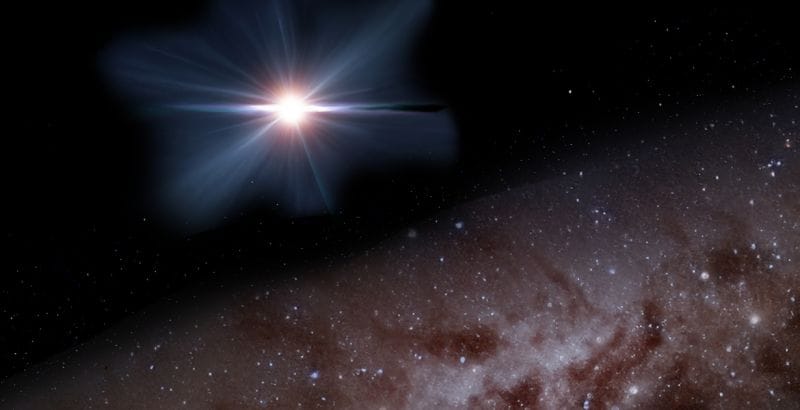Link to the full source article
RSS feed source: National Science Foundation
Scientists have discovered the most distant and therefore oldest blazar ever seen. Labeled J0410–0139, the blazar is at the center of a galaxy 12.9 billion light years away and provides a rare glimpse into what the universe was like when it was less than 800 million years old.
The discovery challenges scientists’ current notions about the early universe, especially black holes. Namely: how big they could get, how fast they could grow, and how many could have existed. The findings are published in Nature Astronomy and The Astrophysical Journal Letters and made possible by multiple facilities, including the U.S. National Science Foundation Very Large Array, the NSF Very Long Baseline Array, the Chandra X-ray Observatory and the Atacama Large Millimeter/submillimeter Array (ALMA).
Detecting a blazar is rare to begin with. A blazar is a type of active galactic nucleus, or “AGN” for short. Supermassive black holes, sometimes millions to billions of times larger than the sun, are found within these nuclei. When feeding on matter, these black holes may project jets of charged particles shooting out in two directions and at almost the speed of light. If it is apparent that a jet is pointed almost directly at the viewer, the object is classified as a blazar.
With the jet of the blazar pointed right at Earth, one can see deep inside the galaxy to
Click this link to continue reading the article on the source website.
